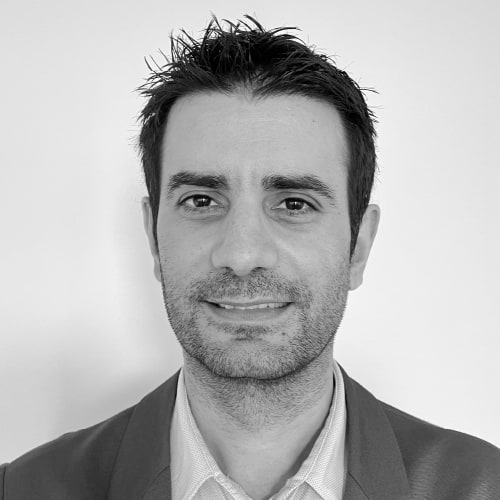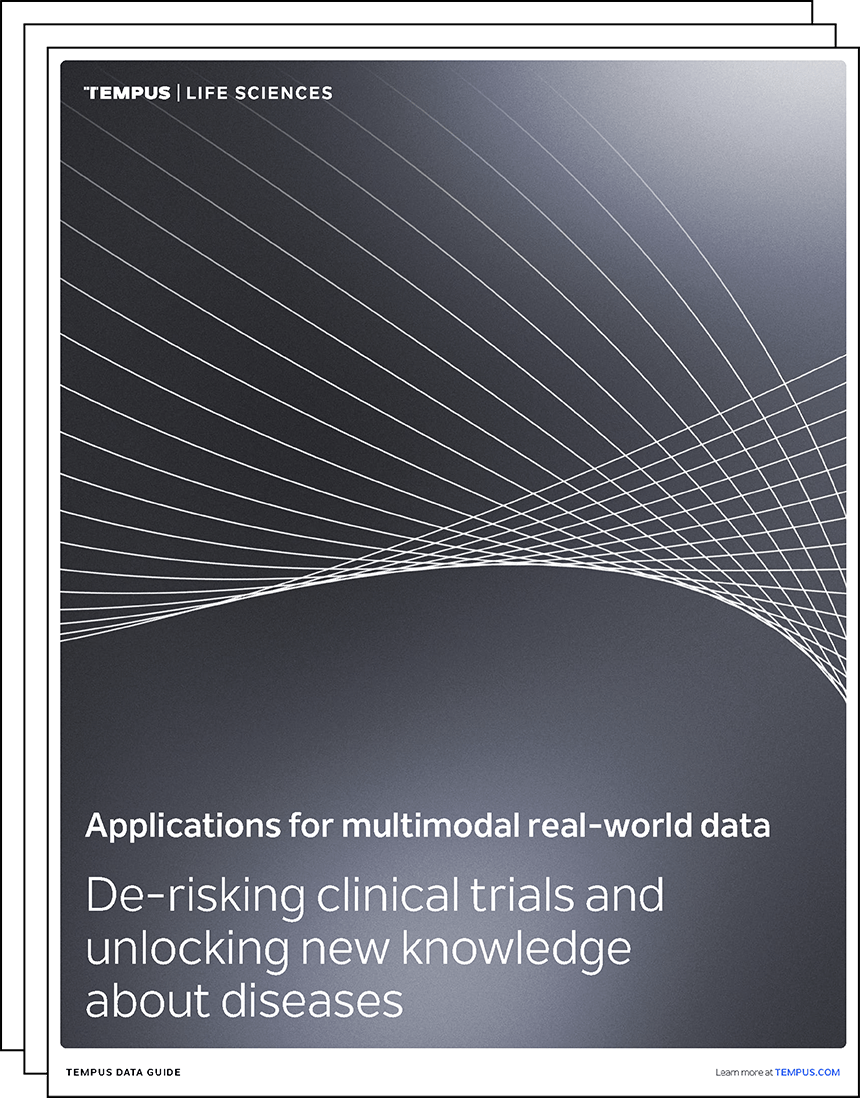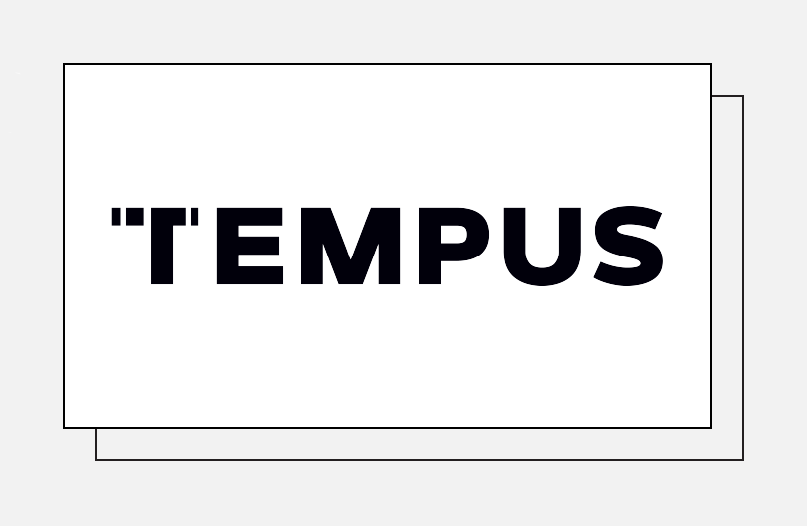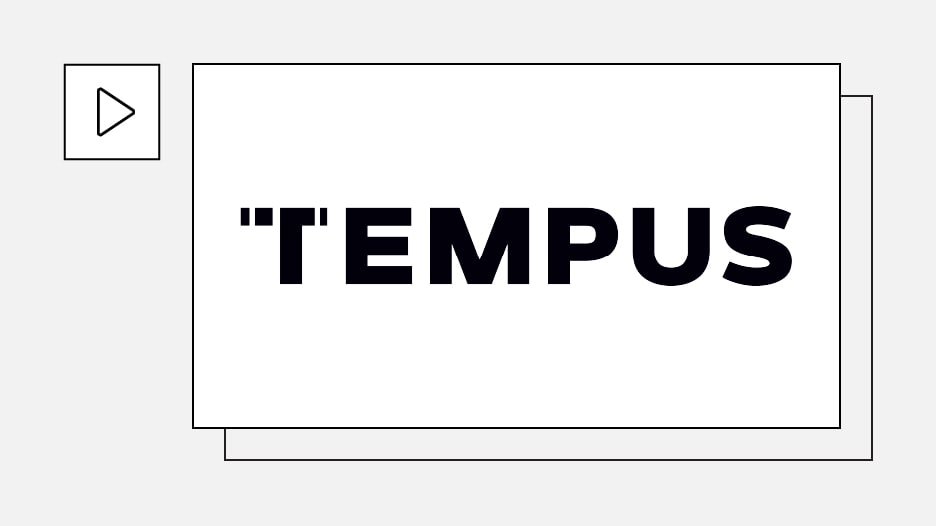-
PROVIDERS
REGISTER NOW
Navigating new frontiers in breast cancer care pathway intelligence: The role of providers and AI
Tuesday, July 29th
2:00pm PT, 4:00pm CT, 5:00pm ET -
LIFE SCIENCES
REGISTER NOW
Closing Care Gaps with AI: The Next Competitive Edge in Pharma
Monday, July 14
9am PT, 11am CT, 12pm ET -
PATIENTS
It's About Time
View the Tempus vision.
- RESOURCES
-
ABOUT US
View Job Postings
We’re looking for people who can change the world.
- INVESTORS
01/10/2023
Q&A: De-risking clinical trials with real-world data
Iker Huerga, SVP, Life Sciences Strategy and RWD at Tempus, discusses how heterogeneous data sources can strengthen clinical trial planning and execution to de-risk research.
Authors
Iker Huerga
SVP, Life Sciences Strategy and RWD, Tempus

SVP, Life Sciences Strategy and RWD, Tempus

Despite extensive planning, resource investment, and R&D innovation, about half of all phase 3 oncology clinical trials fail. Suboptimal trial design, particularly around patient selection and understanding of the performance of the control arm, are major contributors to failures, but real-world data (RWD) – and, more specifically, multimodal RWD – can help researchers validate clinical trial designs, select the right patients, and understand the performance of patients on the current standard of care. Following a data-first approach to clinical trial design helps increase their probability of success, which helps biopharma organizations bring treatments to patients faster and at a lower cost.
Here, Iker Huerga, SVP, Life Sciences Strategy and RWD at Tempus, discusses how the use of multimodal data can strengthen clinical trial design. Iker formerly served as Chief Data Scientist, Oncology R&D at AstraZeneca.
Responses have been edited for clarity and length.
Q: Why is it important to explore ways to incorporate RWD into clinical trial design? |
| Iker: New therapies are approved all the time, so the standard of care for conditions like non-small cell lung cancer or metastatic breast cancer changes every few months. As a result, basing a study’s control arm on historical data may lead to a control population that looks similar to the study population, but isn’t exactly comparable. Benchmarking a study of today’s patients on people enrolled in studies from several years ago means the control group may have received a completely different course of treatment. As a result, estimations aren’t based on the patient population receiving today’s standard of care, and the control group may “overperform” and the study may fail.
Instead, we can use multimodal RWD to better understand how patients perform on the current standard of care, and better select patients that are not benefiting from the current standard of care but may benefit from an experimental drug. This not only reduces cost, but – critically – helps increase the study’s probability of success to bring needed therapies to patients faster. |
Q: What are the important factors for biopharma executives to consider with regard to de-risking clinical trials? |
| Iker: Phase 3 studies can cost anywhere from $50 million to $500 million. Given the price and implications for patients, there is no room for error.
Using multimodal RWD, it is possible to more accurately estimate performance at each step in the clinical trial planning process. Rather than basing assumptions on dated literature studies, RWD can help researchers estimate the performance of the control group, determine the optimal patient selection strategies, and understand the treatment landscape for current patients. Top oncology pharma companies are using this approach and testing it in a subset of their studies to see if using data, instead of literature, can improve a trial’s results, and, if so, by how much. When using multimodal RWD, the teams are typically able to validate their assumptions, understand patients’ performance, and gain insights on the right patient selection strategies. The return on investment can be in the hundreds of millions of dollars, which significantly validates the hypothesis and proves the financial value of a data-based approach to trial design. |
Q: How can pharma leaders implement RWD effectively in their organizations’ trial operations? |
| Iker: In pharma today, most study teams have their own budgets that they use to contract with data and analytics partners. They ultimately decide whether to use RWD in a study. In the end, siloed use of data can be more expensive for the organization, because many teams unknowingly duplicate efforts or contract with the same vendors. For senior executives, I recommend centralizing data assets. With a central budget that can be used to allocate RWD resources across an entire portfolio, it enables more robust studies that are more likely to succeed. Organizations can purchase once and use the data many times. |
Q: What should R&D teams consider as they use RWD to design studies? |
| Iker: Considerations change depending on the stage of the drug development cycle. In phase 1 and 2, RWD can be used to inform patient selection. For example, patients and populations can be identified with certain gene or antibody expressions that can be recapitulated to any clinical pathological features that help improve patient selection. RWD can also help to fine-tune dosage for patients and validate hypotheses.
In phase 3, RWD should be incorporated from the earliest planning stages to inform site selection and study design. Heterogeneous data sources can also help researchers understand the performance of the current standard of care. Post-registration, researchers can use data to generate evidence that could be published in congresses or at conferences to communicate the value of a treatment to payers. The insights gained from designing registration phase 3 studies are typically not published, and become intellectual property of the company that they can use to inform future strategies and studies. |
Q: During your time at AstraZeneca, how did you use heterogeneous data to build clinical trial strategies? |
| Iker: AstraZeneca was a pioneer in the use of RWD multimodal data for study design, primarily for phase 2 and phase 3 studies. This approach has informed key go / no go decisions and ultimately increased the probability of technical success across their oncology portfolio. I think this approach to data is one of the reasons for AstraZeneca’s success. |
Q: What advice would you give to researchers using RWD for the first time in their clinical trial planning? |
| Iker: First and foremost, it is important to really understand your research question and its nuances.
The second step is understanding the data. There is no such thing as a perfect dataset; all of them are different, so it is important to understand the nuances and biases inherent in each. Third, it’s critical to work side-by-side with global product teams, who have a thorough understanding of the asset and deep clinical expertise. There needs to be a symbiotic relationship between data and product experts in which they can share ideas and work together on the same team. That’s where the magic happens and ensures the best possible outcome. |
Learn more

Learn more
Applications for multimodal real-world data
De-risking clinical trials and unlocking new knowledge about diseases
DOWNLOAD GUIDEStay informed
Be notified whenever Tempus publishes new and relevant research, webinars, and other resources.
Sign up-
07/01/2025
Transforming R&D with Generative AI and Real-World Data
Mike Yasiejko, General Manager and Executive Vice President at Tempus, recently spoke with Andrew Mazar, PhD, Chief Operating Officer at Actuate Therapeutics, about the ways Tempus’ liquid biopsy (xF+) and methylation assays have been valuable to Actuate’s work and how the company has benefitted from the partnership
Watch now -
06/12/2025
AI & ML in action: Demonstrating real-world impact in trial design & patient care
Discover how the Tempus platform leverages AI and ML to inform standard of care practices through health equity guidelines and drive insights that help refine clinical trial design. Engage with live demonstrations showcasing how our tools identify patients by modifying inclusion/exclusion criteria and leveraging patient queries. Explore how our tools integrate NCCN guidelines and empower life science teams to access current, actionable patient-journey insights. Learn how these real-world applications can drive progress in your clinical development initiatives.
Watch replay
Secure your recording now. -
06/09/2025
Bridging the translational gap: The role of organoids in oncology R&D
This white paper explores the evolving role of organoids in oncology R&D, highlighting their potential as predictive preclinical models and their ability to reduce translational risk. Download for a comprehensive overview of the scientific landscape, key adoption barriers, emerging innovations, and how pharma companies leverage organoids to accelerate precision medicine.
Read more


